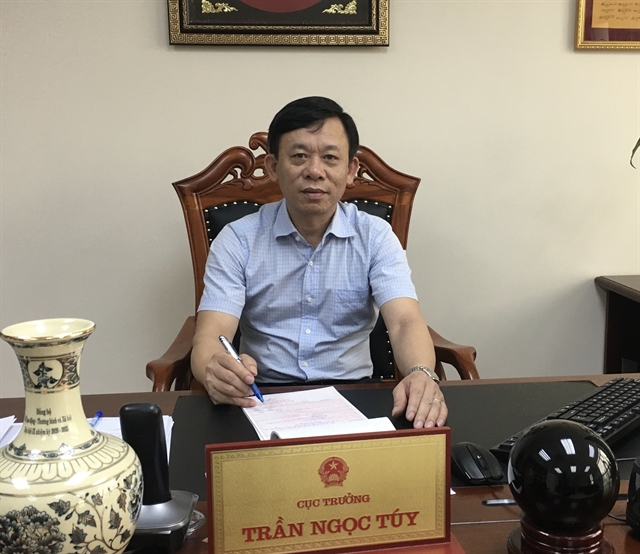 Opinion
Opinion


|
| Trần Ngọc Túy, head of the Social Evils Prevention Department under the Ministry of Labour, Invalids and Social Affairs. Photo baochinhphu.vn |
In a recent interview with Baochinhphu (Government News) online newspaper, Trần Ngọc Túy, head of the Social Evils Prevention Department under the Ministry of Labour, Invalids and Social Affairs talks about community-based rehabilitation for drug addicts in Việt Nam.
What are your thoughts on the addiction rehabilitation in Việt Nam after the Law on Drug Prevention and Control 2021 took effect this year?
According to the law, rehabilitation can be voluntary or compulsory. Compulsory rehabilitation is conducted in public rehabilitation centres and voluntary rehabilitation is done in home, communities or other rehabilitation institutions.
In the first five months of this year, incomplete reports showed that nearly 35,000 drug addicts are experiencing rehabilitation in Việt Nam.
More than 2,000 people currently in community-based voluntary rehabilitation in 19 provinces and nearly 4,000 people across Việt Nam receive methadone treatment at centres under state management.
The number of localities with voluntary rehabilitation increased from ten in previous years to 19 in the first five months of this year.
There have been more localities offering community-based voluntary rehabilitation. What are the benefits of this?
Community-based voluntary rehabilitation is convenient for drug addicts, their families and the government.
When it is done at home, drug addicts can still live in the community, and continue to learn and work where they live while not having to isolate themselves from the community so they can integrate into the community more easily.
It is also convenient for families to share and support drug addicts. This also helps to ease the burden for the government compared to compulsory rehabilitation.
What is new about community-based voluntary rehabilitation under the Law on Drug Prevention and Control 2021 and related legal documents?
According to the law in 2000 which was amended and supplemented from the 2008 law, rehabilitation at home and in communities can be done voluntarily or compulsorily, under the management of the Chairman of the commune-level People’s Committee. This was not very effective so there were new regulations made in the law 2021.
Firstly, Article 30 of the law 2021 stipulates that with community-based voluntary rehabilitation, drug addicts undergo voluntary rehabilitation in their families and communities with professional assistance from rehabilitation service providers, cooperation and support from their families and communities and management of the commune-level People’s Committee.
Secondly, it is regulated that there are four services in rehabilitation: offer counselling and support for drug addicts to have a treatment plan; stop compulsive drug seeking and use, offer detoxification and treatment of mental disorders and other diseases; offer counselling, behavioural and personality rehabilitation; and organise occupational therapy, vocational training and community integration support for drug addicts. Service providers can now register to offer one or many services depending on their capacity. Previously they had to provide all services.
Thirdly, the chairman of the district-level People’s Committee is now in charge of organising community-based voluntary rehabilitation, instead of commune level official like before. The Chairman will assign a state agency that offers rehabilitation services and allocate funds.
What are the advantages and disadvantages?
There are always certain advantages and difficulties when we apply a new way of doing things, especially when it comes to rehabilitation, a specialised area where there has not been a single approach which can work for all drug addicts.
We have seen that there is consistency in management and direction from the Party and government on this issue. The Politburo issued Directive No. 36-CT/TW in 2019 on strengthening and improving the effectiveness of drug prevention, and control. The National Assembly issued Law on Drug Prevention and Control in 2021. The Government issued three decrees and ministries also issued circulars to instruct the implementation of the laws.
We have also offered nationwide training for commune-level agencies. When the pandemic was controlled, the Ministry of Labour, Invalids and Social Affairs, Ministry of Public Security, Ministry of Health and municipal and provincial People’s Committees organised in-person training for localities.
Assigning the chairman of the district-level People’s Committee to be in charge of managing community-based rehabilitation will ensure that the job is done in a more effective way with better capacity and funds.
There are also difficulties due to limited number of service providers and limited investment and fund for rehabilitation. The COVID-19 pandemic also affected our training activities. In addition, a majority of drug addicts do not volunteer (for treatment), so it takes time to do communication work to raise their awareness about their rights when having community-based voluntary rehabilitation. VNS